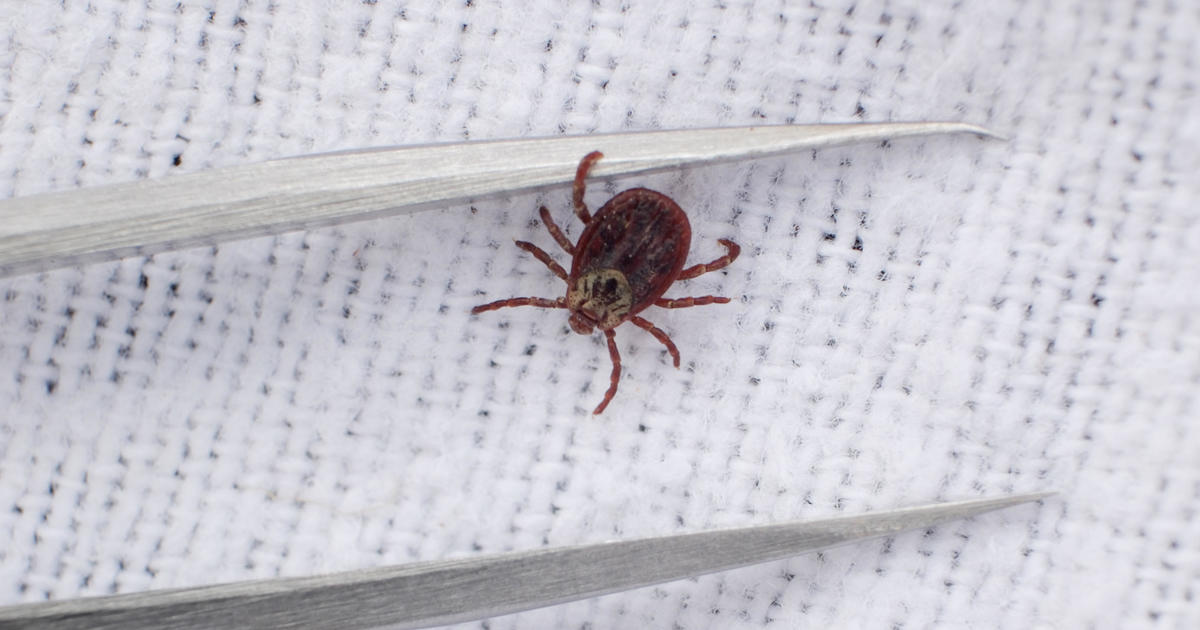What is Lyme disease? Experts describe symptoms, testing and treatment of the tick-borne illness
Supermodel Bella Hadid revealed she's recovering from a long battle with Lyme disease — sparking questions about the tick-borne illness.
And since experts say ticks are out earlier this year and sticking around longer than usual thanks to warming temperatures, it's more important than ever to be aware of how to avoid their potentially disease-carrying bites.
In Connecticut, for example, ticks have been showing up in greater numbers this year, Goudarz Molaei, a tick expert for the state, told The Associated Press. Since Jan. 1, more than 1,000 ticks have been sent in for the state's testing program, the second-highest number in recent years.
"It's going to be an above-average year for tick activity and abundance," Molaei warned.
What are the symptoms of Lyme disease?
Early symptoms of a Lyme disease infection can include:
- Headache
- Fatigue
- Muscle aches
- Joint aches or stiffness
- Chills
- Fever
- Swollen lymph nodes
"Early diagnosis and proper antibiotic treatment of Lyme disease is important," the Centers for Disease Control and Prevention advises. "Patients treated with antibiotics in the early stages of the infection usually recover rapidly and completely." However, the health agency notes some people may experience lingering symptoms, and that more research is needed on the disease.
Without treatment, the Mayo Clinic warns the illness can get worse, with more severe symptoms developing over a period of several weeks or months. And while there is currently no Lyme vaccine on the market for people in the U.S., one is being tested.
Which ticks carry Lyme disease?
Lyme disease is caused by borrelia bacteria, which humans usually contract from the bite of a tick carrying the bacteria.
Ticks that can carry borrelia bacteria live throughout most of the United States, though Lyme disease is most common in the upper Midwest and the northeastern and mid-Atlantic states.
An estimated 476,000 Americans are diagnosed with Lyme disease each year, according to the CDC.
Different types of infected ticks can spread other bacteria, viruses and parasites that make people sick. For example, black-legged ticks, also called deer ticks, can carry more than Lyme-causing bacteria. They can also spread babesiosis, anaplasmosis and Powassan virus disease.
What do tick bites look like?
A tick bite may look like a "tiny, itchy bump on your skin" similar to a mosquito bite, according to the Mayo Clinic. But some people may not even notice they've had a tick bite.
Being bitten doesn't necessarily mean you have a tick-borne disease. However, if the tick was carrying the bacteria that causes Lyme disease, early symptoms usually happen within 3 to 30 days after a bite, the Mayo Clinic explains.
A bull's-eye-shaped rash is a common sign, Bryon Backenson, an assistant professor at the University of Albany School of Public Health, recently told CBS News.
"It's a rash that doesn't always look just like a bull's-eye, but it's a red patch. It's relatively large, usually at least 2 inches or so across," he explains. "Oftentimes it doesn't hurt or itch, it's just there."
How to test for Lyme disease
When diagnosing a patient with Lyme disease, doctors assess a variety of indicators, including the person's symptoms, the likelihood of exposure, the possibility of other illnesses that cause similar symptoms, and sometimes laboratory test results.
Tests, however, can miss early Lyme since they measure infection-fighting antibodies that take a while to form.
"Most Lyme disease tests are designed to detect antibodies made by the body in response to infection. Antibodies can take several weeks to develop, so patients may test negative if infected only recently," the CDC's website explains. "CDC currently recommends a two-step testing process for Lyme disease. Both steps are required and can be done using the same blood sample."
Why do so many celebrities seem to have Lyme disease?
While Hadid recently told fans about her Lyme recovery journey, she isn't the only famous person to open up about having Lyme disease.
In 2020, Justin Bieber shared that he was diagnosed with Lyme disease.
The pop star wrote on Instagram, "it's been a rough couple years but [I'm] getting the right treatment that will help treat this so far incurable disease and I will be back and better than ever."
In 2015, Avril Lavigne opened up about her experience with Lyme disease, which left the then-30-year-old bed-ridden for about five months.
"I felt like I couldn't breathe, I couldn't talk and I couldn't move. I thought I was dying," she told People magazine. "There were definitely times I couldn't shower for a full week because I could barely stand. It felt like having all your life sucked out of you."
Lavigne said she believes she was bitten by a tick the spring prior to her diagnosis.
Kris Kristofferson's wife told Rolling Stone in 2016 she believes the actor and songwriter picked up his Lyme disease infection from a tick as he crawled around the forest in Vermont during six weeks of filming the movie "Disappearances."
Other celebrities who have had Lyme disease include Hadid's mother Yolanda, Amy Schumer, Shania Twain, Ben Stiller and Alec Baldwin.
Does bug spray work on ticks?
There are several methods to protect yourself from ticks, both before you go outside and once you return indoors. Here are some expert tips:
Know where to expect ticks: "Ticks live in grassy, brushy or wooded areas, or on animals. Spending time outside walking your dog, camping, gardening or hunting could bring you in close contact with ticks," the CDC says, adding many people get ticks from their own yard or neighborhood.
Wear long-sleeved clothing: "It's easier said than done, of course, when it's really warm out," Backenson admits. He says lighter-colored clothing can also help you more easily spot the small parasites. Also consider wearing long pants tucked into your socks in tick-infested areas.
Prep yourself and your clothing: Consider insect repellant if you're going to be outdoors for an extended period. The CDC advises using an EPA-registered insect repellent containing DEET or other insect-repelling ingredients, listed on the organization's website.
You can also pre-treat your clothing. For example, Backenson suggests treating things like your gardening shoes and hiking gear. The CDC recommends using products containing 0.5% permethrin, which can remain protective through several washings.
Once home, take a shower: The CDC says showering within two hours of coming indoors has been shown to "reduce your risk of getting Lyme disease and may be effective in reducing the risk of other tickborne diseases." Showering can also help wash off unattached ticks.
Do a tick check: "If you check yourself every 24 hours when you're getting into the shower... you can really find these ticks and pull them off," Backenson says.
During tick checks, the CDC advises looking in spots that ticks can hide, including:
- under the arms
- in and around the ears
- inside the belly button
- behind the knees
- between the legs
- on the hairline and scalp
Having someone help check your back and scalp, where you might have trouble seeing yourself, is also a good idea.
What are the best ways to kill ticks?
Worried you're bringing ticks inside via your clothes?
Putting your outdoor clothes in a hot dryer for about 10 minutes is "enough to kill a tick," Backenson says.
If you find a tick on you, you'll want to remove it quickly and correctly.
"Don't wait to have it removed," Backenson says. "With a fine-point pair of tweezers, get as close to the skin as you possibly can and gently and firmly pull straight up and that tick will pop right out."
After removing the tick, the CDC suggests cleaning the bite area and your hands with rubbing alcohol or soap and water.
You should also never crush a tick with your fingers. Instead, the CDC says to dispose of a live tick by putting it in alcohol,
putting it in a sealed bag, wrapping it tightly in tape or flushing it down the toilet.
Lastly, keep an eye on the area. If symptoms occur, see a doctor.
–The Associated Press contributed to this report.



